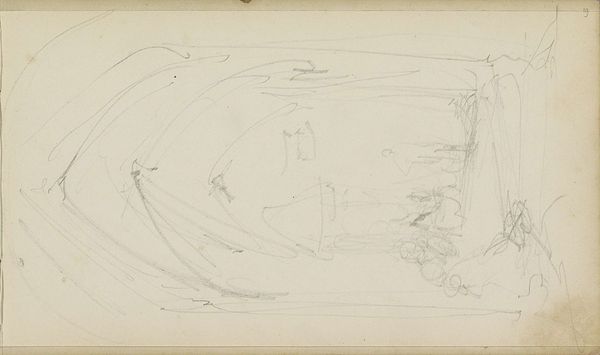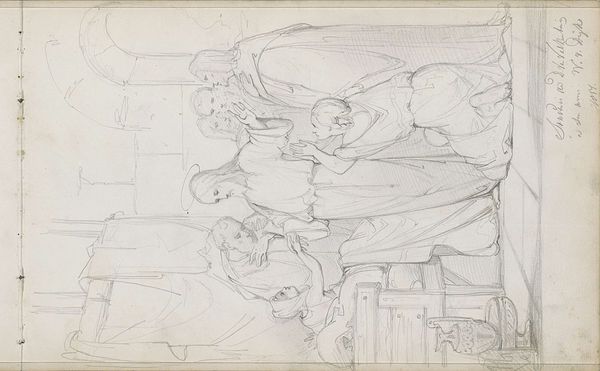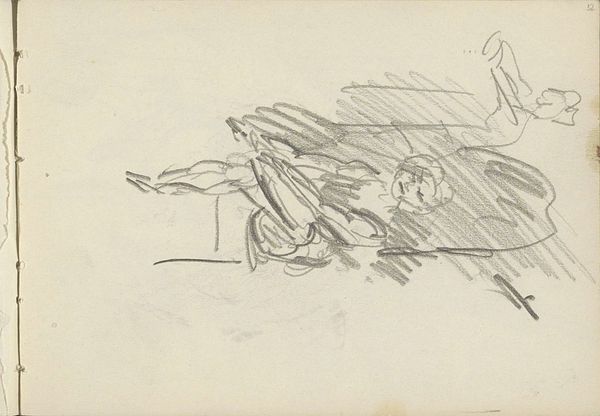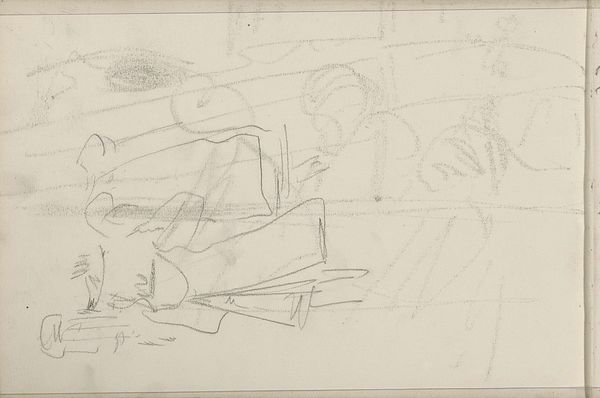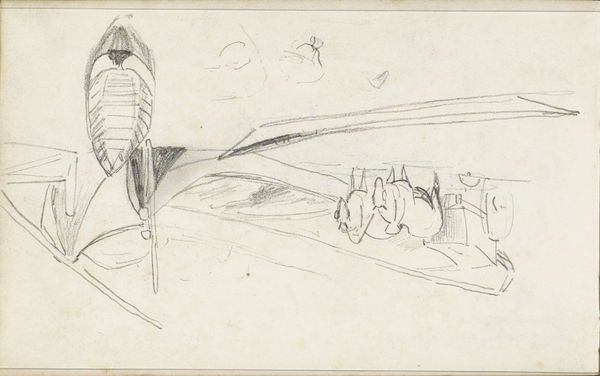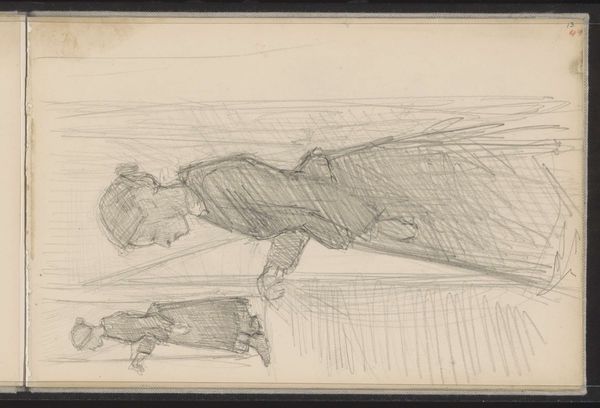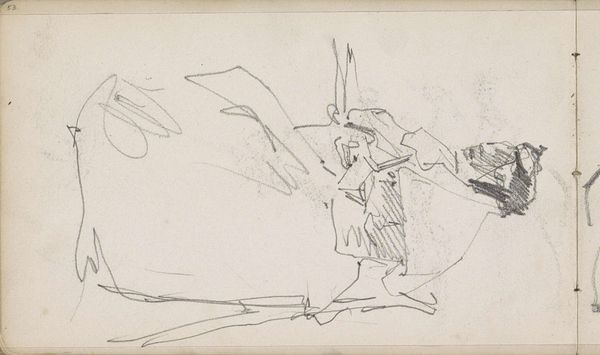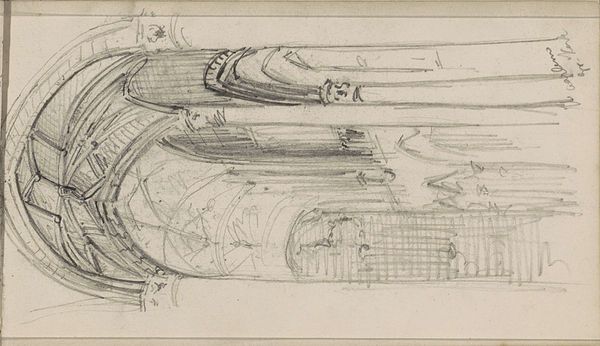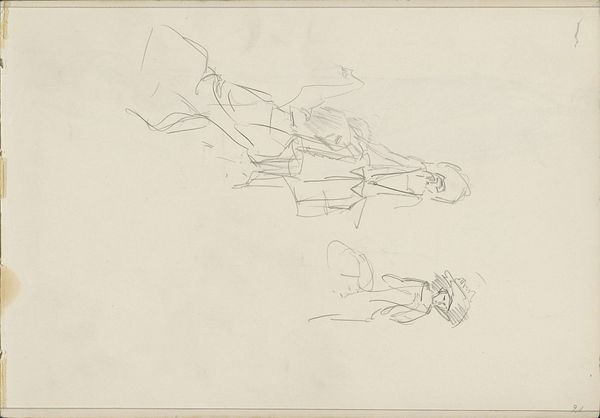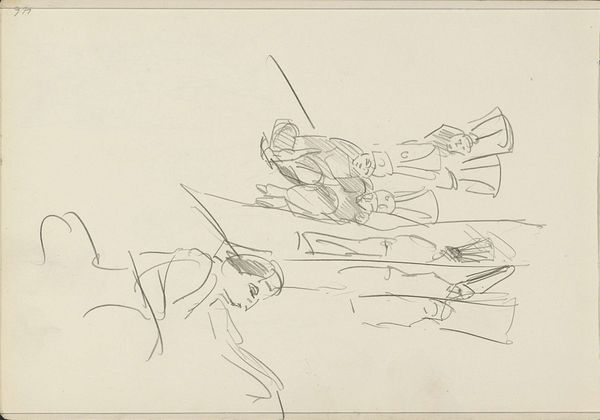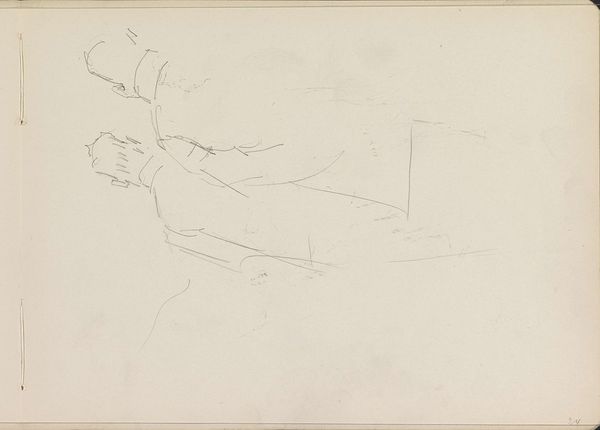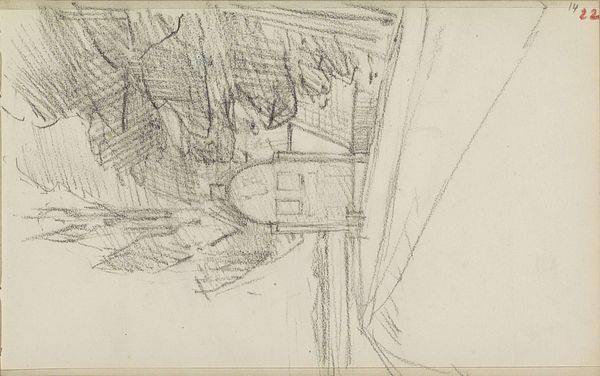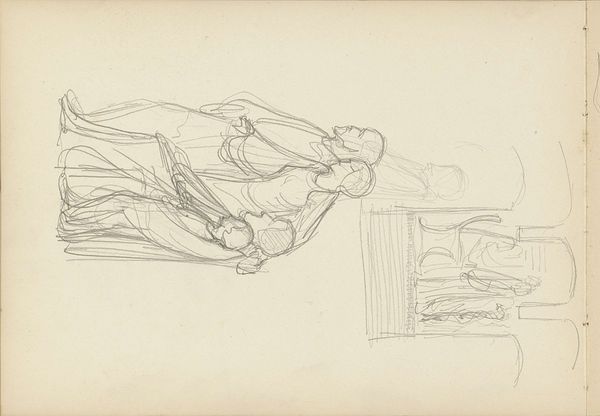
Copyright: Rijks Museum: Open Domain
Editor: This is "Figures by a Chandelier in a Church Interior" by Johannes Bosboom, dating from around 1845 to 1891. It's a pencil drawing on paper, and it strikes me as so immediate and raw, capturing this grand interior space with these fleeting lines. What draws your attention when you look at it? Curator: Immediately, the provisional nature of the sketch demands attention. It prompts questions about artistic labor: what was the function of this sketch? Was it a preparatory study for a painting? Understanding its role in the artist's process shapes our interpretation. Editor: That's interesting, I hadn't thought about it as part of a process. So, you're thinking about it in terms of its use? Curator: Exactly. Also consider the material. The humble pencil and paper contrast sharply with the ornate chandelier and the implied grandeur of the church. Why this choice of materials? Was it about accessibility, portability, or something else? The economic context of artistic production is crucial. Who commissioned works from Bosboom? Were these drawings made for personal use, for sale, or as a means to secure patronage? The material realities underlying artistic creation reveal power structures. Editor: So it's less about the aesthetic beauty and more about the materials used, who was involved, and how it all fits together socioeconomically. That’s a fresh way of looking at it. Curator: Precisely! Considering how the artist chose those specific materials really brings forward the economic realities, not just aesthetic intentions, to appreciate what went into its creation. It invites a materialist reading beyond just the representation of the church interior. Editor: Thanks, that gives me so much more to think about when looking at seemingly simple works like this.
Comments
No comments
Be the first to comment and join the conversation on the ultimate creative platform.
